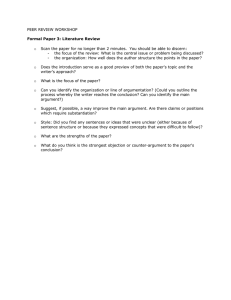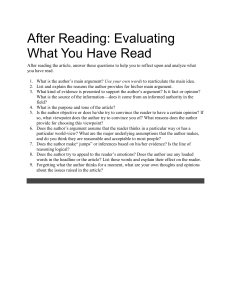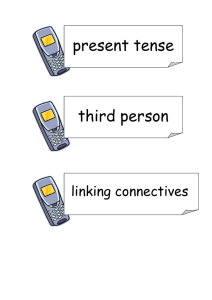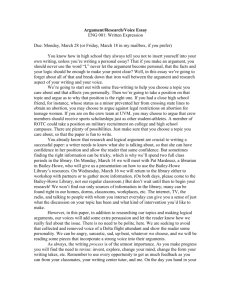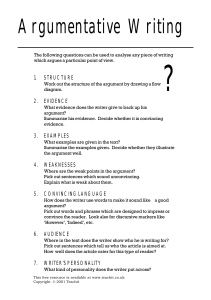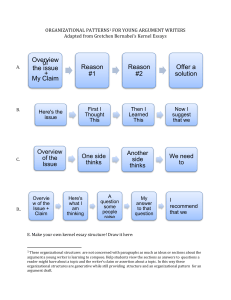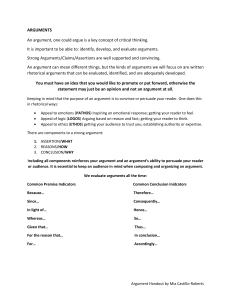Argument Arguments are used for many purposes—to change the
advertisement
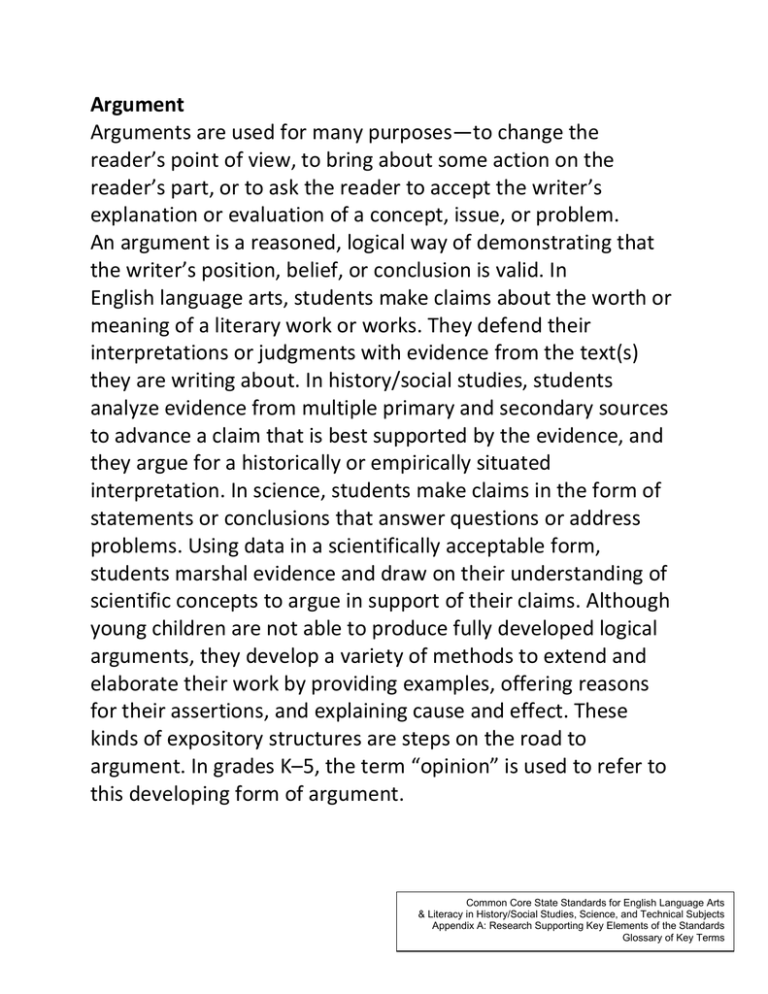
Argument Arguments are used for many purposes—to change the reader’s point of view, to bring about some action on the reader’s part, or to ask the reader to accept the writer’s explanation or evaluation of a concept, issue, or problem. An argument is a reasoned, logical way of demonstrating that the writer’s position, belief, or conclusion is valid. In English language arts, students make claims about the worth or meaning of a literary work or works. They defend their interpretations or judgments with evidence from the text(s) they are writing about. In history/social studies, students analyze evidence from multiple primary and secondary sources to advance a claim that is best supported by the evidence, and they argue for a historically or empirically situated interpretation. In science, students make claims in the form of statements or conclusions that answer questions or address problems. Using data in a scientifically acceptable form, students marshal evidence and draw on their understanding of scientific concepts to argue in support of their claims. Although young children are not able to produce fully developed logical arguments, they develop a variety of methods to extend and elaborate their work by providing examples, offering reasons for their assertions, and explaining cause and effect. These kinds of expository structures are steps on the road to argument. In grades K–5, the term “opinion” is used to refer to this developing form of argument. Common Core State Standards for English Language Arts & Literacy in History/Social Studies, Science, and Technical Subjects Appendix A: Research Supporting Key Elements of the Standards Glossary of Key Terms



